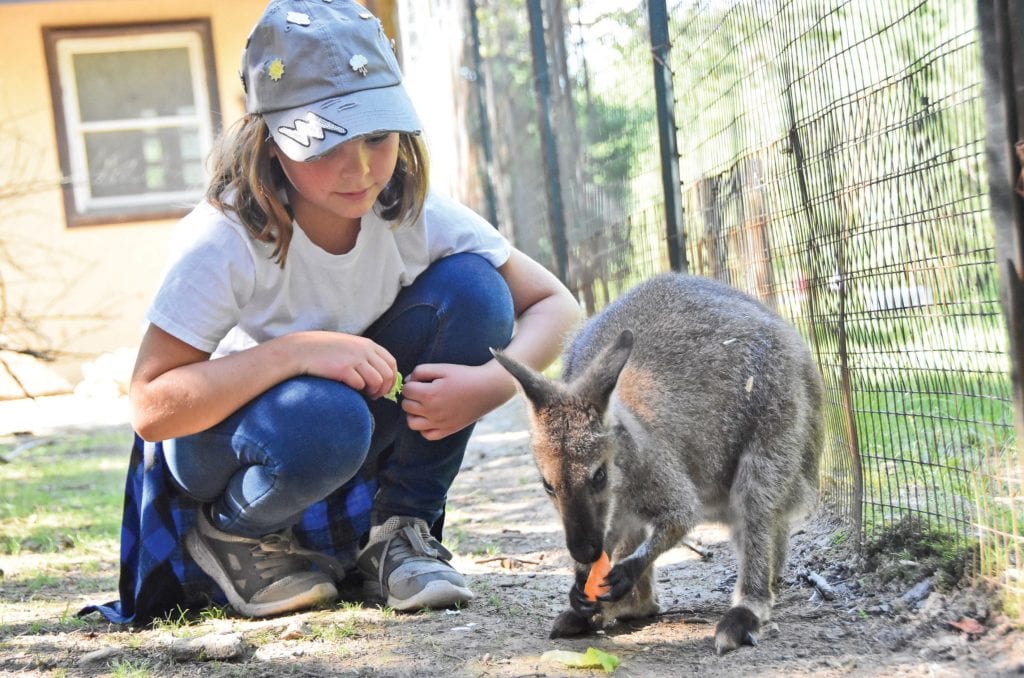Most kids jump at the chance to play with dogs, cats and other household pets. But what about ring-tailed lemurs, wallabies and two-toed sloths? At Cub Creek Science and Animal Camp in Rolla, campers get to interact with more than 300 fascinating and exotic creatures, form new friendships, and learn to appreciate both people and animals.
One of the best ways to teach kids is through hands-on experiences, and when it also happens to be a lot of fun, they stand a better chance of remembering what they’ve learned, says assistant camp director Ari Farley. Cub Creek offers summer sleep-away sessions lasting between one and four weeks for kids ages 7 to 17. The programs focus on animal care, fellowship, environmental awareness and scientific discovery. Together, these activities help young people develop a broader perspective of the world and their influence on it, according to Farley.
Cub Creek is home to birds, insects, reptiles, amphibians and mammals whose purpose is to help campers appreciate their importance to the environment. Kids learn firsthand about their life cycles, behaviors, habitats and roles in their ecosystems. Animal encounters are supervised, and campers are taught proper handling and care to make sure their experiences are safe and memorable. They can go from petting an alpaca to learning about the zebu (a kind of South Asian cattle), all while gaining new skill sets and practical knowledge. Farley says campers also get plenty of exercise and fresh air through hiking, exploring, ziplining, ropes courses and other challenging outdoor activities.
She says the camp puts a great deal of emphasis on helping kids become trailblazers for the planet and its creatures. The Leaders in Training program for ages 13 and up establishes leadership skills, and the Animal Specialist in Training program (ASIT) is for returning campers age 15 and older who are interested in animal care. There’s also a Junior Naturalist initiative that offers hands-on lessons in field biology. “A lot of our kids go on to study veterinary and environmental sciences,” Farley says. “One former camper went through the ASIT program, became a counselor, joined the staff here and now is a sea lion trainer at the Saint Louis Zoo.”
According to Farley, the camp improves confidence and encourages independence. “One mom told us that her daughter was afraid to get involved with clubs or social activities, but after attending camp, she learned how to open up to other people,” she says. “Being here definitely helps children develop necessary social skills. Many of them tell us that once they’ve been through the program, they are no longer afraid to try new things on their own. At Cub Creek, kids develop a sense of responsibility and ownership for the planet and all of its creatures.”
Cub Creek Science and Animal Camp sessions are held May through August and attract young people from all over the country. Pictured on the cover: Campers play with lemurs at Cub Creek. For more information, call 573.458.2125 or visit cubcreeksciencecamp.com.
Cover design by Julie Streiler | Cover photo courtesy of Cub Creek Science and Animal Camp
Pictured at top: Cub Creek campers learn about animals firsthand.
Photo courtesy of Cub Creek Science and Animal Camp
